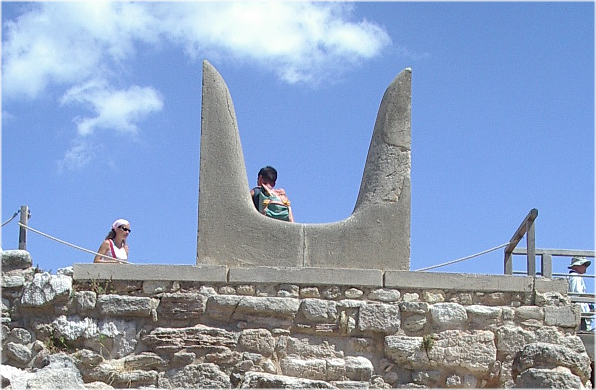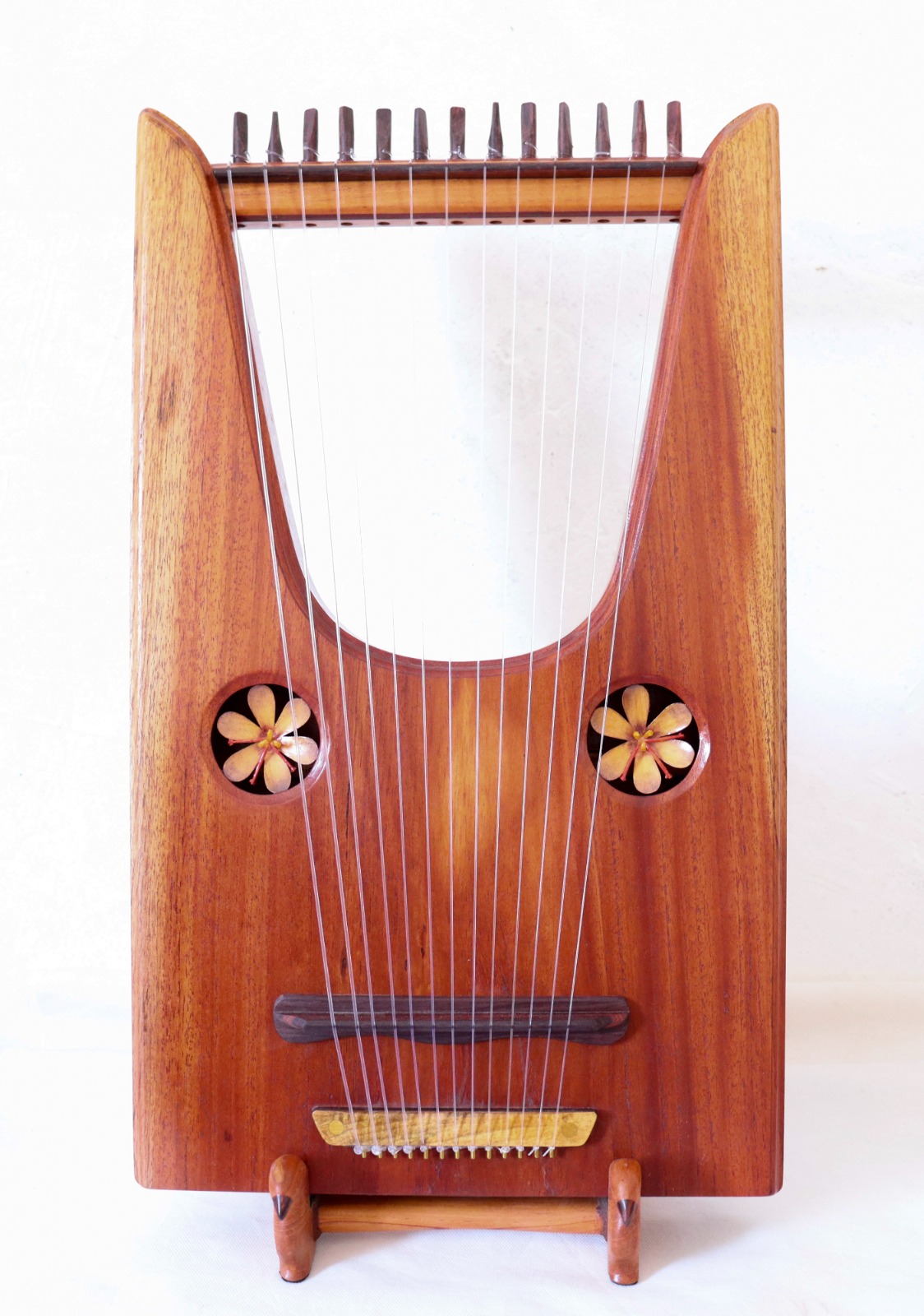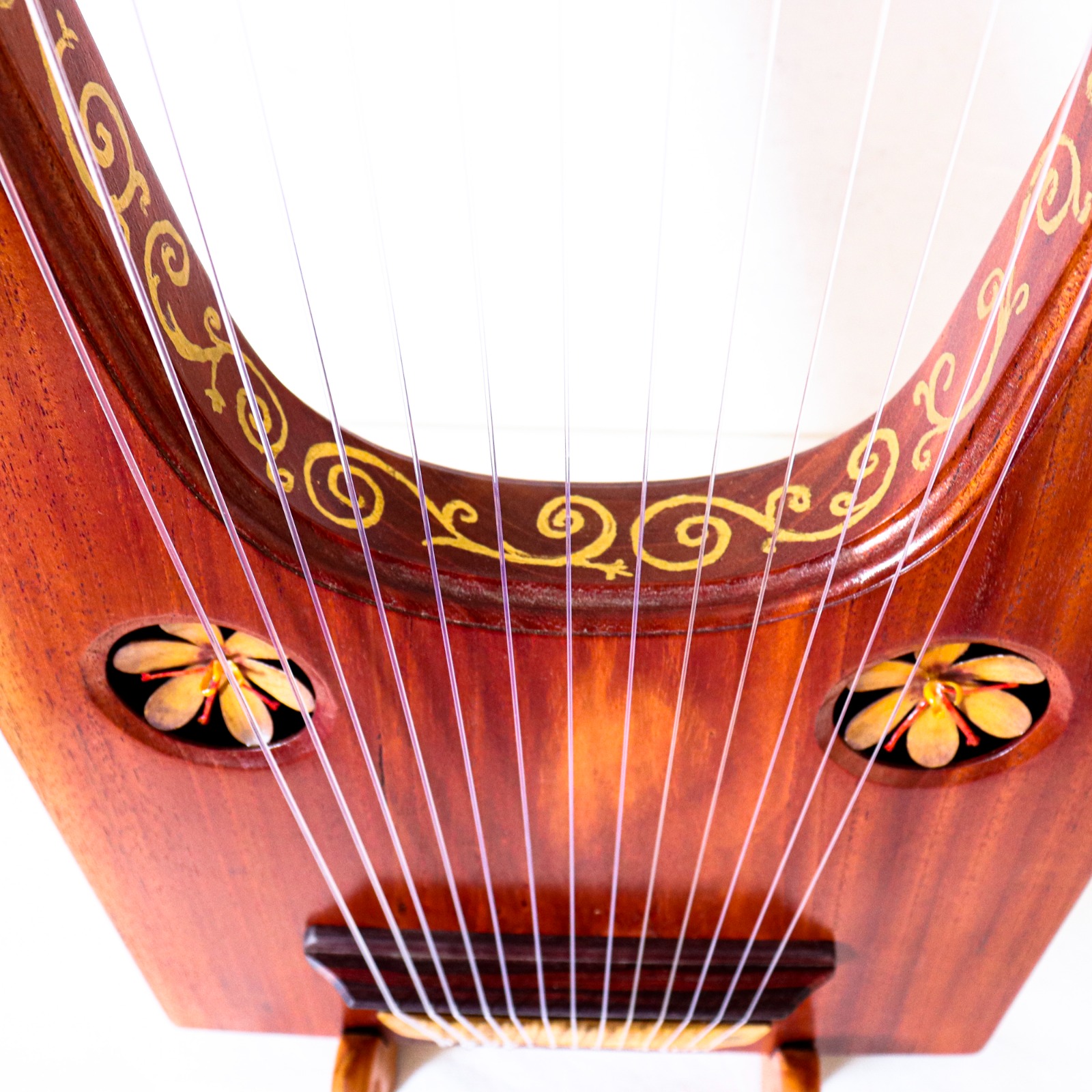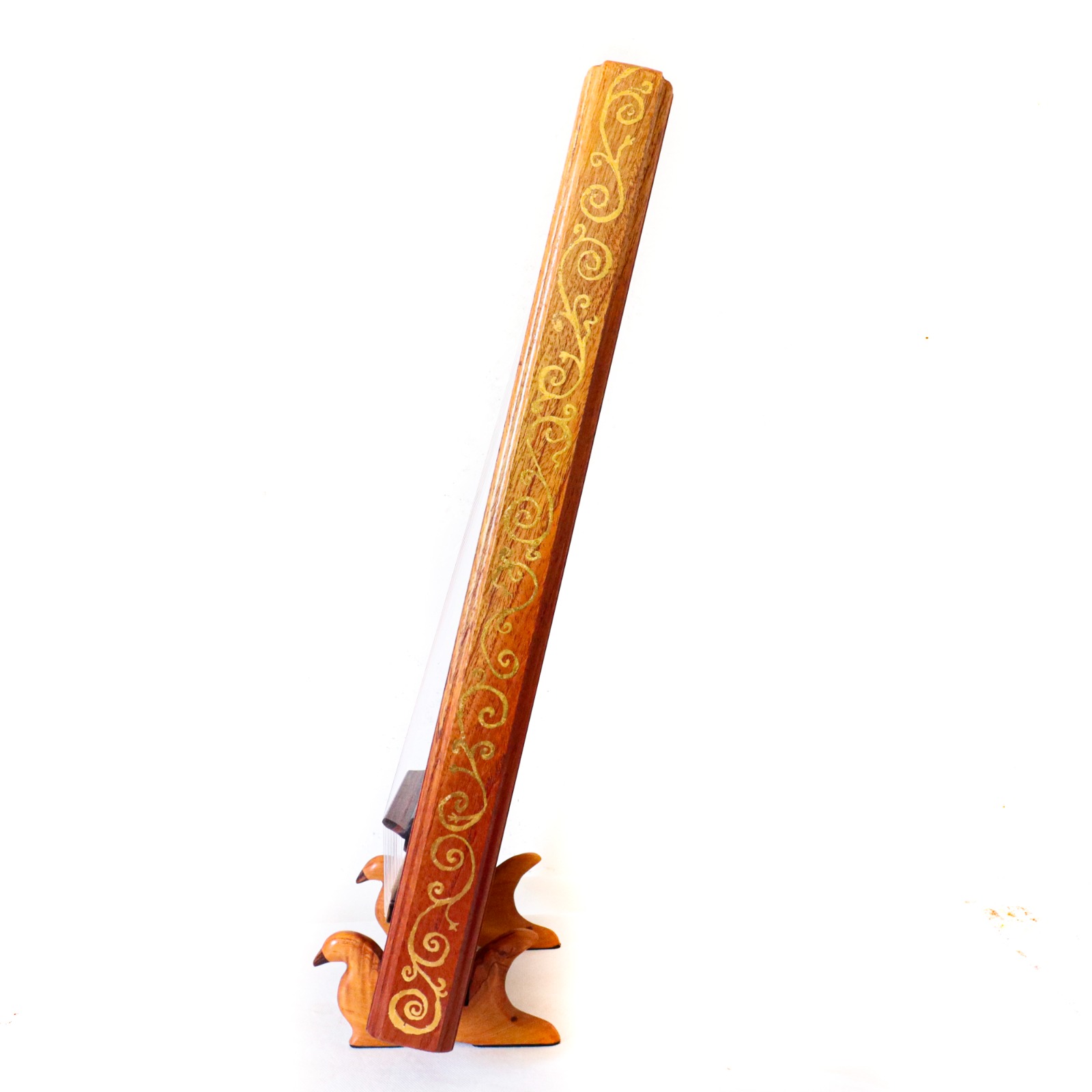Me, complain about geeking out over early instruments? You must be kidding! :)
Uh, I did get a bit over-zealous in thinking about this, though, producing a bit of a hefty ramble. So sorry in advance for being a bit wordy here ...
I had a feeling these instruments wouldn’t be new to you! Thanks for going into detail. You’ve certainly given me plenty to think about! These instruments are a new discovery for me, so it’s great to have more information about them, and their modern reconstructions too. I’m slowly reading more, as and when I have time, and I’m having a whale of a time.
It sounds like I should really start looking into Peter Pringle in more detail. He’s clearly put a lot of thought and effort into reconstructing these instruments, over many years to boot, and he’s produced some really impressive results. He must have some insightful things to say about the reconstruction progress! That point about adding a metal bar into the frame to support the tension of the strings under tuning clearly shows that he knows his stuff!
Thanks, by the way, for posting his Lament for Gilgamesh. It’s phenomenal! I appreciate how he’s really going all out in that performance, fully emoting all the way. The two instruments and the voice combine beautifully, too. And the sound of the lyre is really quite something. Those deep metallic overtones are extraordinary. I really can’t think of any other instrument that produces a tone quite like that!
You’ve also pointed out something really obvious, but which I somehow hadn’t clocked. I’d thought about Crete being a powerful trading centre, but only in the sense of collecting artifacts from other cultures. Somehow, I hadn’t thought about the *reverse*! It makes perfect sense in hindsight that Minoan artifacts would have spread widely around the Mediterranean area, and that the cultural mixing would go both ways. I think, whenever I’ve looked at Minoan artifacts in the past, I’ve not really checked where they were actually *found*. I’ll have to pay to may more attention to that in the future!
For instance, I find the idea of cultural mixing between Egypt and Crete rather appealing. I’d always held the two cultures in my head separately, not properly realising that these two cultural powerhouses would naturally have been in contact. It’s interesting to think about how they might have interacted! I had no idea that there were Scarabs were found in Crete, for instance. I’ll have to look those up!
I wouldn’t be at all surprised if Minoan artifacts turned up in Mesopotamia, too. It they made it as far as Egypt, I can image them getting to Babylon as well. I did propose something like that, but it would be interesting if there were artifacts that actually backed that up. I’ll keep an eye out for any references while I’m reading around!
For what it’s worth, I do like your theory that lyres were a highly developed class of instruments in c.1400BC. That makes a whole lot of sense to me.
My thinking on this comes down to the time factor. We know that lyres were in use in 2600BC, over a thousand years previously. And there’s evidence of other stringed instruments that goes back even further. I had a dig around for another reference while thinking about this, which I’ll put here just for fun. Here’s a cylinder seal found in a broadly similar area to the Mesopotamian lyres, Uruk this time, dating from c.3100BC. The general consensus seems to be that the figure on the left (of the righthand portion of the image) is playing a sort of lute. This artifact is in the British Museum, and the image is under their copyright:

Also, there seems to be good consensus that people were employed as professional musicians as far back as the Mesopotamian lyres, and possibly even earlier. That ties in with what you said about the kithara! (Fun fact, references to the kithara pop up in my work from time to time, but almost exclusively in Latin texts.) Moreso, it seems that musicians were employed by royalty, presumably in well-paid, honourable positions.
As soon as you start giving people power and status for something, you get innovation! I simply cannot imagine that musical instruments and playing techniques would have remained static for a thousand years, given that. Musicians would surely have competed with each other for the top jobs, developing refinements to existing instruments, new ways of playing instruments, new modes of composition, even new instruments, all to gain an advantage over the competition. Since lyres were around in at least 2600BC, they must have received significant refinement by the high period of the Minoan civilisation. And with refinement comes variety. I can well imagine that a great variety of different types of lyre would have developed, much as there is great variety of violin-like instruments in the modern day.
So I would totally buy your idea of lyres being a highly developed set of instruments by c.1400BC.
I’ll tie that into your comment about lyre sizes, too. While there seems to be a broad consensus on the sorts of sizes of ancient lyres, I – speaking only as an amateur, of course! – think it’s possible to read too much into the archeological evidence. Lyres are relatively fragile instruments (except for these hardy metal early models, I suppose), and decompose easily. We really don’t have all that many surviving examples of them, in the grand scheme of things. And the ones we *do* have are presumably fairly traditional. I don’t think it’s unreasonable to assume that lyres produced and played by the common person would have been largely lost.
So, while we do have a range of lyres in the archeological record, I’m not convinced they’re a representative sample. I would guess there’s more variety than we strictly have evidence for. And I don’t think there’s any harm in making some logical guesswork about what might be missing, given what we know about music in general.
I think one fairly natural innovation in music is in pitch. If you have instruments playing together, it makes sense to have the instruments playing at quite different pitches. That makes the different parts easier to hear. Since we have some evidence of people singing to lyres – that is, two musical instruments playing together – then wouldn’t someone also have thought to have several *lyres* playing together as well? That might also help explain the rather elaborate tuning systems on these instruments, too. While these are naturally needed to keep the instrument in tune with itself, one important facet of a tuning system is to help one instrument play in tune with *other* instruments.
When you propose an idea of a ‘lyre consort’, like this, it makes sense to have lyres of different base pitches too.
Since the pitch of a lyre scales with its size, then I’d argue that you should expect lyres of several different sizes to exist. The two obvious sizes to have are ‘big’, making a ‘bass’ lyre, and ‘small’, making a ‘treble’ lyre. If you add more instruments, you’d put them in-between those two sizes, where they can add internal harmony (giving you ‘alto’, ‘tenor’ ‘mezzo’, etc. lyres). It looks like there’s variation like this in existing lyres already, to some degree – hopefully I'm not rehashing something that's well-known! – but I’d propose there’s more variation than we have evidence for.
So, while your 1m tall lyre might seem large compared to the historical record, I’d just argue that you’ve made a ‘bass lyre’! Or maybe even a ‘contrabass’!
Now that I think about it, I wonder if Asterion might have some views on this? I can picture Asterion wanting to teach the lyre to the player (perhaps particularly for an artist-type player?), but maybe they could also play *together*? I’m envisioning a situation where Asterion and the player form a little lyre duo! (In a slightly niche reference, I can’t help but think back to the little duet between Marin and Link in the original Link’s Awakening).
It’s interesting to hear that you’re working on a new design for Asterion’s lyre, too. One thing that got me wondering about this topic was thinking back to the early design you used. Reading what you’ve said here, it makes perfect sense that you’d go for something straightfoward (and easily recognisable!) early on, when you didn’t know as much as you do now!
I have to admit, I’ll be really interested to see the sort of design you come up with. I can imagine Asterion going in a bunch of different directions with an expanded instrument, especially if modern design techniques come into play. I look forward to seeing how that looks!
And no, it is absolutely *not* dorky to want to make his lyre reproducible! Anything that encourages people to play music is a great thing, especially if it’s in relatively niche areas such as ancient (or ancient-ish) instruments. I think that’s a pretty cool venture, myself. Kudos for you for wanting to make it affordable, too.
Now, you’ve probably already thought really carefully about this. And you already know far more about the design of these instruments than I do! So anything I come up with you’ve probably already thought of! Still, I couldn’t resist having a little think about how a good-quality, affordable lyre could be produced. It’s an interesting little puzzle.
This might be a bonkers idea, but I’m wondering whether one solution might be making it out of metal? As I understand it, the high cost of many high-end string instruments is due to the time and skill needed to carve the wood. Making metal objects can be much quicker and cheaper, under the right circumstances. That’s particularly the case if you choose the metal well – certain metals come surprisingly cheap.
This is bit beyond my simple metalworking skills, but I think you could make the frame of a metal lyre using a casting process. You make a mould, pour molten metal into it, and when it cools you have a metal frame. With the Mesopotamian lyres, you do have some degree of historical precedent too! I say this with the caveat that the internet claims that such a process is unsuitable for short production runs, although I’m sure my serious metalworking friends do things like this quite regularly. I’d have to check with them – it’s possible I’m being stupid, and misunderstanding something they’re doing! At least using this approach you’d only need to pay for the production of the mould first off, and then just the material and time taken to pour and cast after that. Maybe it would come out cheaper than wood?
The other option that comes to mind, which people could make independently, is 3D printing. It should be possible to create all the components of a particular lyre (minus the strings, naturally) out of plastic. This approach has the advantage that you could make an official Minotaur Hotel CAD design, which people could download and use straight away! The worry I have with this, though, is that I’m not sure how a plastic lyre would sound. I think that the material of a lyre should be really important for its tone quality. Since plastic isn’t very dense, it won’t make a very good resonator, and I’d worry that a lyre made using it would be quiet and tinny. It might not be nice to hold, too. And, somehow, I can’t quite envision Asterion going for plastic. But maybe it’s worth experimenting with, just in case?
Anyway, you’ve probably had better ideas than those already!
By the way, there’s something I meant to say earlier in this thread, but never got around to. Would you perhaps consider sharing some sound files of you playing your lyre at some point? I’d be interested to hear your instrument, and your interpretations, and I’m sure other people would be too. Your beast of a lyre must produce a pretty awesome sound! (Of course, no pressure. I know only too well that public performance is a whole different world to playing in your own company!)







